Have you found some weeds with heart-shaped leaves in your yard?
We’ve compiled a list of the most common types with photos and plant descriptions to make weed identification easy.
Let’s dive in.
Examples of Weeds With Heart Shaped Leaves
Japanese Knotweed (Reynoutria japonica)

Japanese knotweed is a perennial broadleaf weed. It’s one of the most troubling weeds with heart-shaped leaves to find growing on your property. The reason?
Because Japanese knotweed is a highly invasive and persistent weed that’s very difficult to get rid of and you might need professional help at significant expense to eradicate it.
Japanese knotweed is a fast-growing and aggressive weed. Its size increases by 10 cm per day up to a maximum height of 11 ft. tall. The plant has an extensive network of roots and rhizomes and sends new shoots up through the surface to fuel further growth and spread.
You can identify knotweed by its hollow red bamboo-like stems. The leaves are large and green with a pointed tip and grow from 2-7 inches long. If you rub them, they feel thick with a rough texture. In late summer, knotweed blooms, with the weed producing small white flowers that hang in clusters (panicles).
You’ll often see Japanese knotweed growing around riverbanks, roadsides, waste grounds, and hedgerows. But it sometimes encroaches onto property, causing damage to building structures and growing through paving and tarmac.
Prickly Sida (Sida spinosa)
SIDA SPINOSA BY DINESH VALKE FROM THANE, INDIA, CC BY-SA 2.0, VIA WIKIMEDIA COMMONS
Does the weed have a spike at its leaf nodes? If the answer’s yes, then you might be looking at prickly sida.
Also known as teaweed, prickly sida is a perennial herb. It grows up to 3 ft. tall on stems covered in fine white hairs. The green, ovate to heart-shaped leaves have toothed margins and a spine at their base, as well as a covering of fine hairs that are easiest to detect through touch.
SIDA SPINOSA LEAVES BY NY STATE IPM PROGRAM
Prickly sida grows in full to partial sun and moist, fertile soil. And from mid-summer to early fall, the plant blooms, producing small yellow flowers on flowering stalks that grow from the leaf axils.
Hoeing and hand-pulling can control prickly sida when it first appears, and low mowing can help before the weed sets seed.
Purple Deadnettle (Lamium purpureum)
Purple deadnettle is a winter annual broadleaf weed that you’ll often find in moist areas such as drainage ditches, the edges of woodland, or shady lawn areas with poor drainage. Purple deadnettle is an aggressive grower, and like other weed varieties, in the right conditions, the weed quickly spreads.
Purple deadnettle has distinctive square, reddish-green stems. At the top of the stems are small pink-purple flowers. The leaves are heart-shaped or triangular with gently scalloped edges and sparsely covered with fine hairs, giving the weed leaves a fuzzy feel.
Purple deadnettle is usually a low-growing plant, although sometimes it grows up to 10 inches tall.
Common Burdock (Arctium minus)
Also known as lesser burdock, common burdock is a biannual weed. It’s one of the most common weeds with heart-shaped leaves to find growing in your yard and on your lawn. You also find it in pastures, paddocks, next to roadsides, and alongside streams.
Identifying burdock is simple. During the first year of growth, the weed develops a basal rosette of large leaves, 6-18 inches long and 4-14 inches wide. The leaves are dark green with fine hairs on the underside and have reddish stems that make them resemble rhubarb.
In the second year of growth, burdock sends up a tall hollow stalk that can reach 6 feet high with alternate growing leaves that are smaller than the basal leaves. The plant blooms from July to October, producing lavender to purple flowers at the end of branches and in the leaf axils.
The flower heads resemble a thistle and are covered in spines. Each flowerhead dries up as they age. And turn into prickly burrs with curved spines. The burrs easily hook onto clothing or the fur of animals to spread the seed they contain.
Once common burdock is established it’s difficult to get rid of because of its deep taproot and the large volume of seeds each plant produces. The plant only reproduces by seed, so try to prevent it from doing so by cutting.
Unlike many weeds, common burdock has some uses. The foliage, stalks, and roots are all edible, and you can use them for medicinal purposes.
Creeping Wood Sorrel (Oxalis corniculata)
Creeping wood sorrel is a low-growing plant that resembles a clover weed. This is because wood sorrel has a similar trifoliate leaf, consisting of 3 heart-shaped leaflets. Light-green to purple-red stems grow from 2-8 inches tall, spreading through horizontal stolons that creep above and below the ground.
When creeping sorrel blooms, it produces flowers from stem tips and leaf axils that grow individually or in small groups of 2-5. Each flower has five yellow petals that are sometimes reddish at the base.
Creeping wood sorrel is a weedy wildflower that spreads aggressively in the right conditions, preferring full or partial sun and disturbed areas of loose, fertile soil.
You can control creeping wood sorrel weeds by hand-pulling or cultivation with weeding tools such as a hoe. Remove it before it sets seed to minimize its impact the following year.
Another closely related weed with heart-shaped leaves is yellow woodsorrel (Oxalis stricta).
Velvetleaf (Abutilon theophrasti)
Velvetleaf is a giant weed that can grow up to 8 ft. tall, and the leaves are heart-shaped, green, and covered in short hairs, giving them a velvety feel.
In the summer, the plant produces 5-petalled, orange-yellow flowers that grow up to1-Inch in diameter from the leaf axils on short stalks.
You’ll find velvetleaf growing in gardens and agricultural fields. But it’s also common to see it beside railroad tracks and roadsides.
In a number of states, velvetleaf is considered a noxious weed. It’s a very competitive plant that takes nutrients and water out of the soil, preventing crops from getting sufficient quantities and reducing their yield.
And it can be difficult to get rid of velvetleaf. The seeds stay dormant in the soil for a long time. They’re brought to the surface when land is disturbed. And sprout when the soil becomes warm enough in the spring. Flaming is an effective way to deal with small velvetleaf weeds. or you can use herbicides.
Henbit (Lamium amplexicaule)
Henbit bears a resemblance to its close cousin, purple deadnettle. Like purple deadnettle, henbit has a square stem and pink-purple flowers. But henbit flowers have a longer tube than those found on purple deadnettle.
Henbit is a weed with heart-shaped leaves growing from a deep red stem. They grow in opposite pairs and have deeply scalloped edges that are sometimes rounded and a sparse covering of hairs. Depressed veins on the upper leaf surface give a wrinkled appearance.
The upper leaves are green and attached directly to the main stem, while those growing lower are attached to petioles. In contrast, purple deadnettle has purple-tinged upper leaves connected to petioles.
Like purple deadnettle, henbit likes to grow in moist, fertile soil, and full-to-partial shade and is often found in gardens, agricultural areas, landscapes, and roadsides. Henbit is a winter annual that blooms in the spring before disappearing in May as temperatures climb.
Henbit has a fibrous root system, and it’s best to remove the plant by hand while it’s still small and easy to pull. You can use a pre-emergent herbicide to prevent henbit seeds from germinating and post-emergent herbicides can kill weeds already growing.
Wild Violets (Viola sororia)
Wild violets are attractive wildflowers when they’re growing in the right place. But when they’re growing on your lawn it’s a different matter. Wild violets spread by seeds and rhizomes, quickly taking over neglected lawns.
Violets bloom between April and June, and identification is easy: look for their hairless leaves with serrated edges and pointed ends, and 5-petalled purple-blue flowers.
Broadleaf weed killers containing the ingredients triclopyr, dicamba, and 2,4-D can control wild violets. But you’ll often need to treat the area more than once.
A spring application will kill the first violets that sprout on your lawn. But more plants emerge from the rhizomes between April and September. So like other common lawn weeds, you’ll have to check regularly and repeat the treatment as necessary to keep it in check.
Morning Glory (Ipomoea)
The name morning glory refers to a number of closely related plants, many of which are summer annual broadleaf vines. Morning glory spreads through seeds and regrows yearly but reseeds so successfully that you probably won’t notice.
The plant is well-known for its trumpet-shaped flowers that grow in clusters of 2-5 and come in many colors. You can find morning glory vines with white flowers, purple flowers, pink flowers, blue flowers, red flowers, orange flowers, and sometimes bi-colored flowers. The flowers bloom from June to November.
The leaves are 3-5 inches long, sometimes glossy, and grow alternately along the vine.
Morning glory vines rapidly spread in hot weather. A mature plant can quickly grow vines 15 ft. tall, with the stems twisting around each other to strengthen and support the plant’s growth.
Some people like to plant morning glory as a groundcover or aesthetic enhancement for fences and barriers. But because it grows fast, morning glory can quickly become an invasive vine, spreading into yards nearby, growing over all surfaces, and harming plants.
Once established, morning glory can be very hard to get rid of, often requiring the use of powerful chemicals to kill the weed.
Honeyvine Milkweed (Ampelamus albidus)
Honeyvine milkweed is also called climbing milkweed, dog’s wort, bluevine, and sandvine. It’s a perennial climbing vine plant that grows fast, often increasing length up to 12 ft. during a growing season.
The stems are slender, hairless, and intertwine as they grow along the ground or climb. The leaves grow 3-7 inches long and 1.5-5 inches wide, have white veins, and grow oppositely from the stems on petioles. Small white flowers with 5 petals grow in clusters. The plant produces large, green seedpods 3-6 inches long.
Some people incorrectly identify honeyvine milkweed as bindweed or morning glory because of the leaf shape. But the white veins and the difference in the flowers make it easy to distinguish from other types of vine weeds.
Honeyvine milkweed spreads by seeds and rhizomes and can grow in most soil types. It’s common to find this weedy vine in urban areas in gardens and along fence rows, as well as woodland edges and cultivated fields.
Honeyvine milkweed is very difficult to control once it becomes established. You can keep it in check by cutting the vines to the ground and using a systemic herbicide.
Hedge Bindweed (Calystegia sepium)
Hedge bindweed is a perennial herbaceous vine. It has long, mostly hairless stems that twine around vegetation and climb over fences and walls, clinging to them for support.
The stems are light green to red and have large leaves that grow up to 5 inches long (1). The seedling leaves are also heart-shaped. When it blooms, the vining weed produces white or pink trumpet-shaped flowers with leafy bracts at their base.
Hedge bindweed is a noxious weed and grows aggressively, quickly spreading through its rhizomes and dispersing seeds that can remain in your soil for up to 30 years. So it can be challenging to control bindweed once it becomes established.
Canadian Wild Ginger (Asarum canadense)
Also known as broad-leaved asarabacca and Canadian snakeroot, wild ginger is native to eastern North America, and often found growing in deciduous forests. But it can also appear in your garden when the conditions are right.
Wild ginger is a herbaceous perennial weed that likes to grow in the shade, forming a dense groundcover of velvety leaves. The weed spreads through rhizomes and forms clumps that can spread and quickly take over an area.
The plant is low growing, reaching 4-8 inches high. At ground level, beneath the foliage, singular bell-shaped flowers grow. The flowers are hairy and brownish-purple in color.
Wild ginger is not always an unwanted plant, and some people like to use it as a groundcover in shady parts of their garden as it can prevent invasive weeds from becoming established. Wild ginger also has a history of use as a medicinal herb by Native Americans. But it’s best to avoid consuming any part of this plant as it contains aristolochic acid, a known carcinogen.
Chameleon Plant (Houttuynia cordata)
The chameleon plant is a herbaceous perennial native to East Asia and Northeastern India. Sometimes grown by gardeners for its visual appeal, the plant can be an invasive weed if it escapes, quickly spreading through fleshy rhizomes that grow deep and wide.
The weed has green, heart-shaped leaves with margins that can be red, yellow, pink, bronze, cream, or maroon. They grow oppositely from vertical stems and release a citrus fragrance if you bruise or crush them.
From May until late summer, the chameleon plant blooms producing tiny greenish-white to greenish-yellow flowers. The plant grows up to 12 inches tall and about 3 feet wide.
Some people like to use the chameleon plant as a decorative groundcover in their garden as it’s easy to grow. But be careful. The chameleon plant is a tenacious weed that spreads rapidly if it gets out of control. And once established, it’s very hard to kill.
Digging the chameleon plant out is challenging, and it often takes many seasons to eradicate because it can regrow from any pieces of rhizome left behind. Systemic herbicides make the job easier, but they can still take multiple applications.
Lesser Celandine (Ficaria verna)
Lesser celandine is also called fig buttercup. The plant is a herbaceous perennial native to Europe and introduced to the United States as an ornamental.
Lesser celandine is a low-growing weed that forms a dense mat as it spreads. The plant can outcompete turfgrass and desirable plants in shady parts of your garden and is known for displacing spring ephemerals growing in woodland. Some US states now consider it a noxious and invasive weed.
The weed forms a rosette of kidney to heart-shaped leaves (2) that can reach 12 inches across and 12 inches tall. They are smooth with wavy edges and grow on deeply grooved stalks.
In March and April, lesser celandine blooms, developing bright yellow flowers that can grow up to 2.5 inches wide.
Lesser celandine grows from bulblets and tubers, so take care during manual removal, as it can regrow from any pieces left in the soil. Using a post-emergent herbicide is usually an easier way to control the spread.
Common Sunflower (Helianthus annuus)
Common sunflowers are annual weeds well-known for their large flowers and tall growth.
The plant has a long, thick, upright stem. The stem has a covering of fine hairs. Huge, green, ovate to heart-shaped leaves (3) with rough, textured surfaces grow on long, thick stalks. At the top of the central stem is a large, bright-yellow flower that can grow up to a foot in diameter.
Sunflowers spread through seeds and grow from a single taproot that can reach a depth of 10 feet. They prefer well-drained soil and full sun. You’ll often find them growing in gardens, fields, and along roadsides.
You can control sunflower weeds by cutting off the flower heads before they go to seed. Alternatively, use herbicides for larger infestations.
References:
- Weeds: Hedge bindweed – Calystegia sepium – https://hortsense.cahnrs.wsu.edu/fact-sheet/weeds-hedge-bindweed-calystegia-sepium-convolvulus-sepium/
- Lesser Celandine – https://dnr.wisconsin.gov/topic/Invasives/fact/LesserCelandine.html
- Common Sunflower – https://cals.cornell.edu/weed-science/weed-profiles/common-sunflower
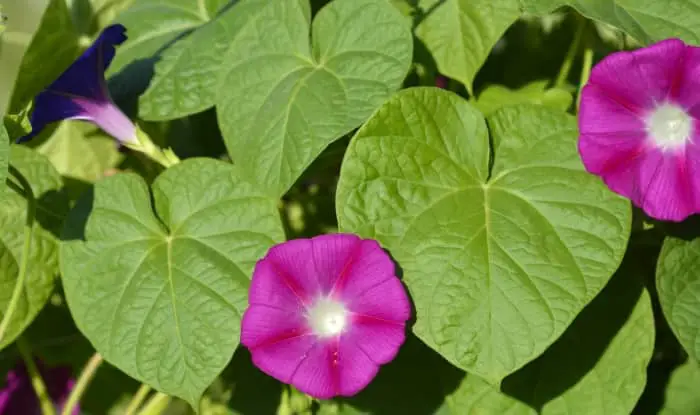
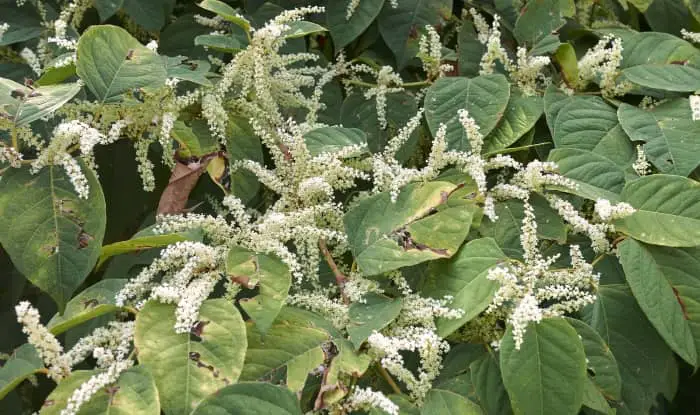

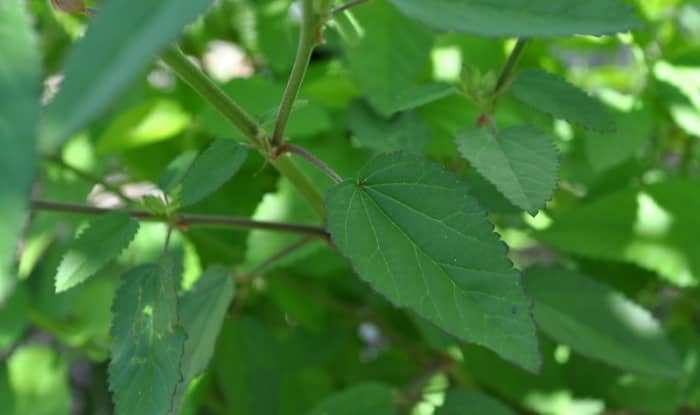
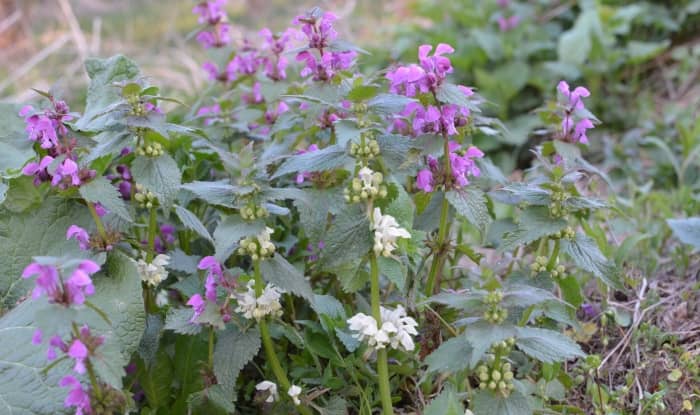

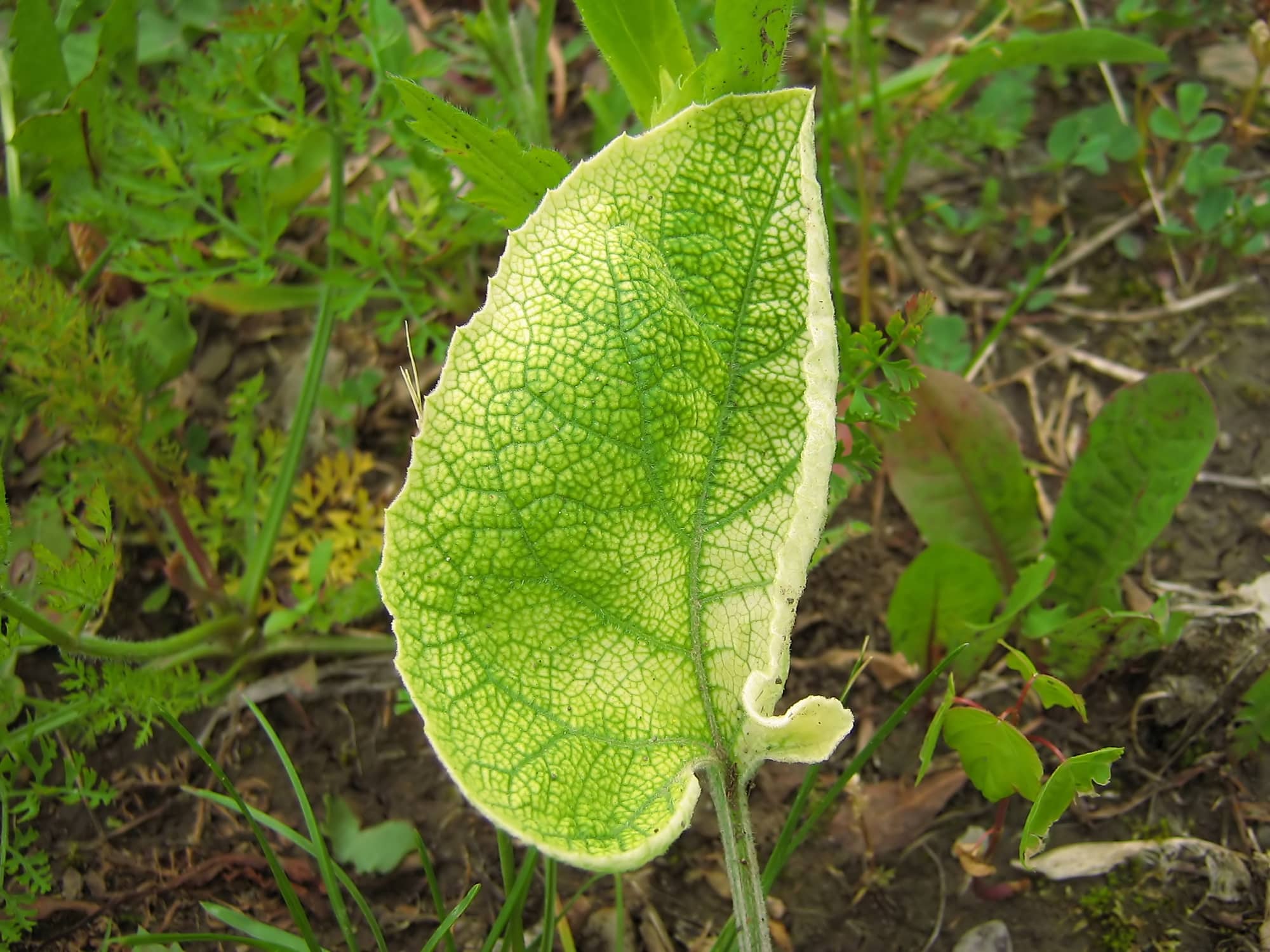

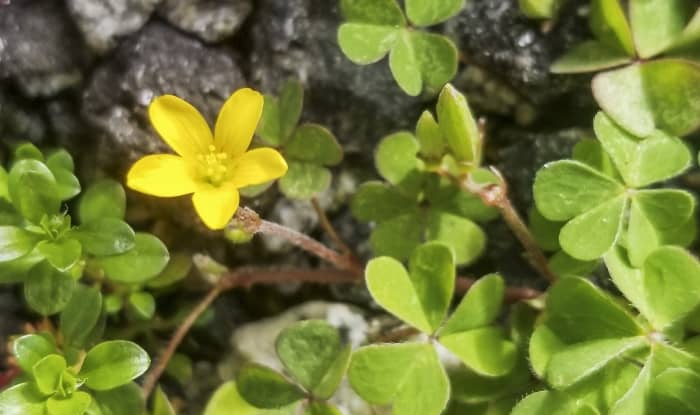
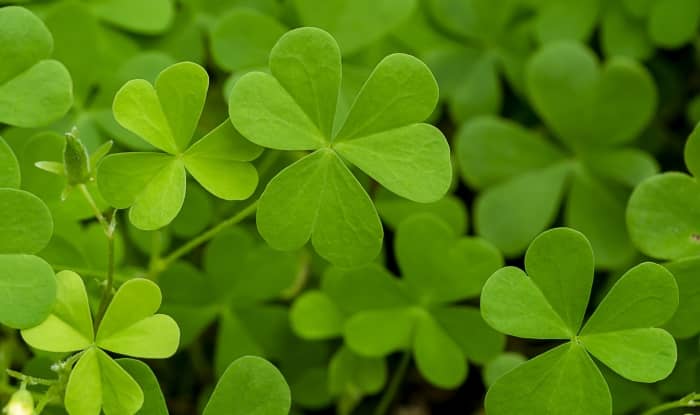
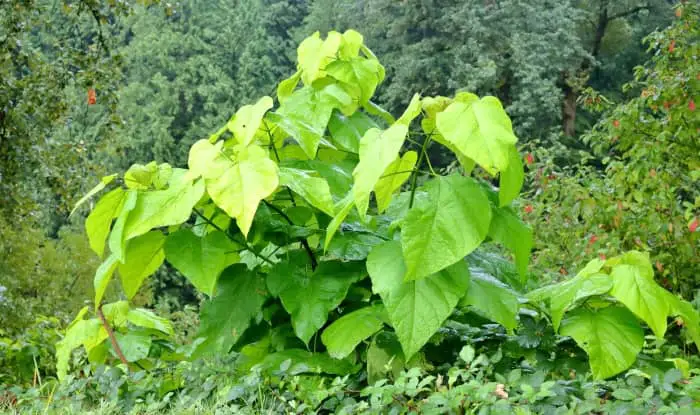
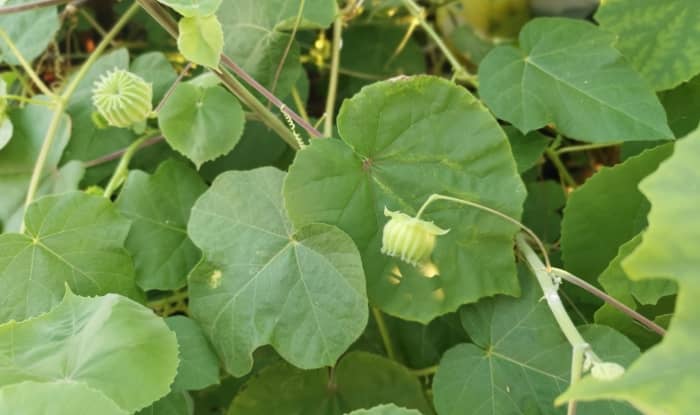


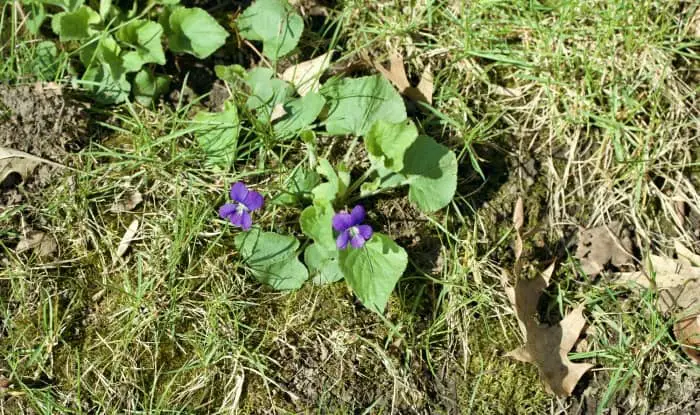
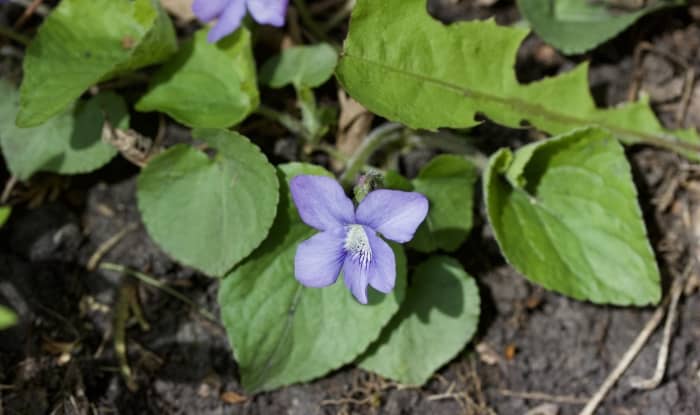


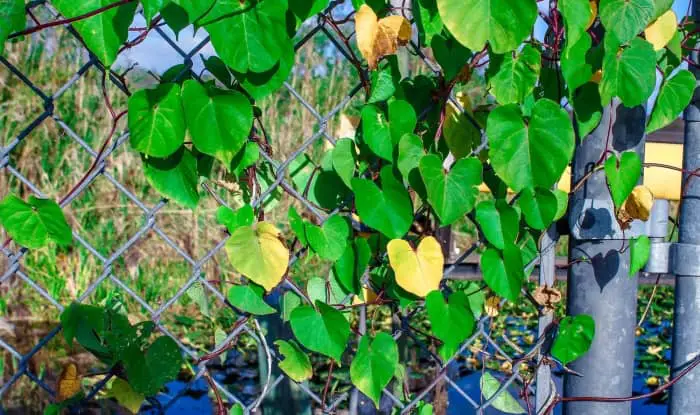
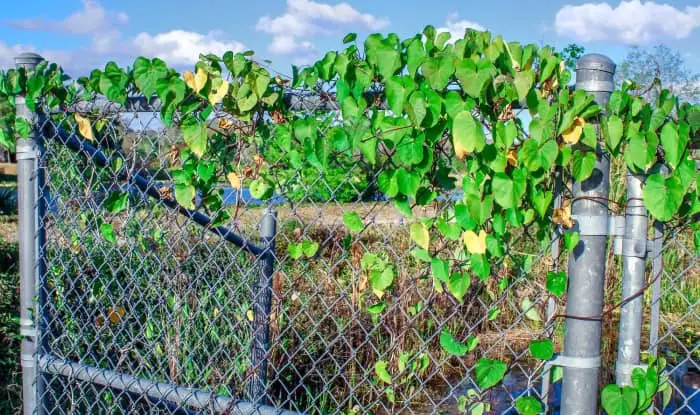
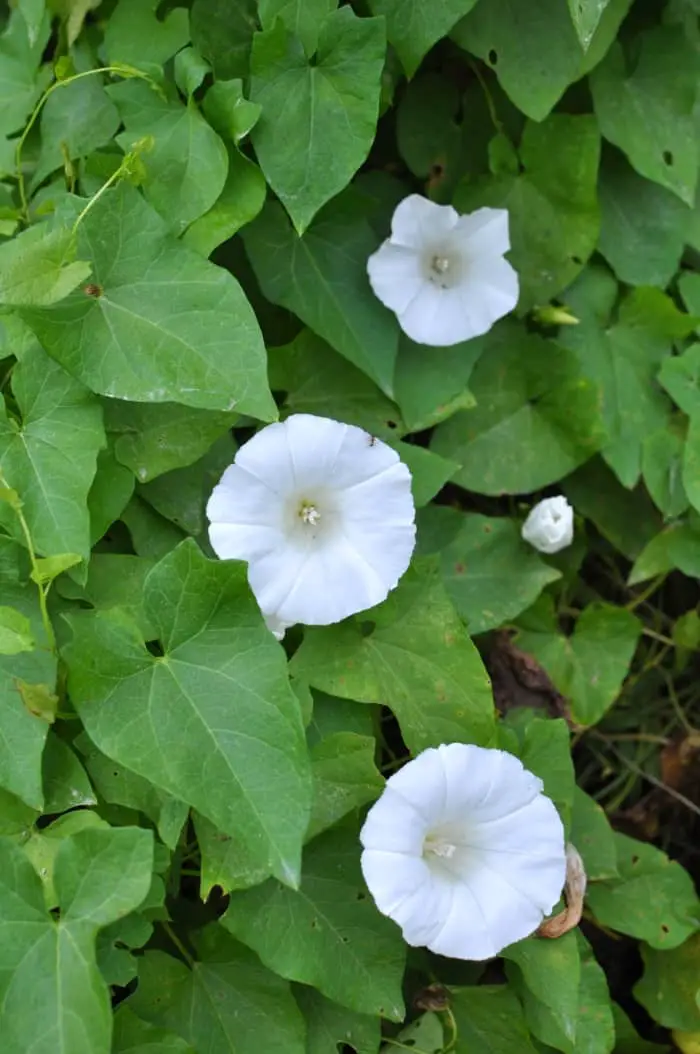
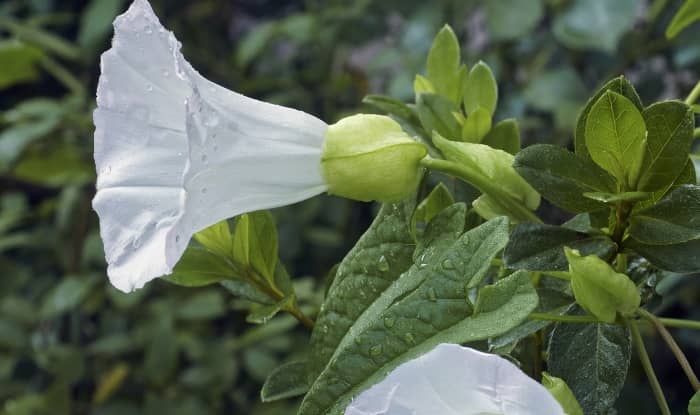
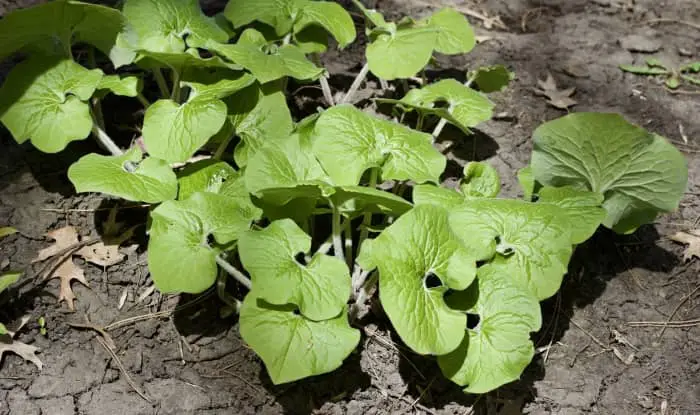


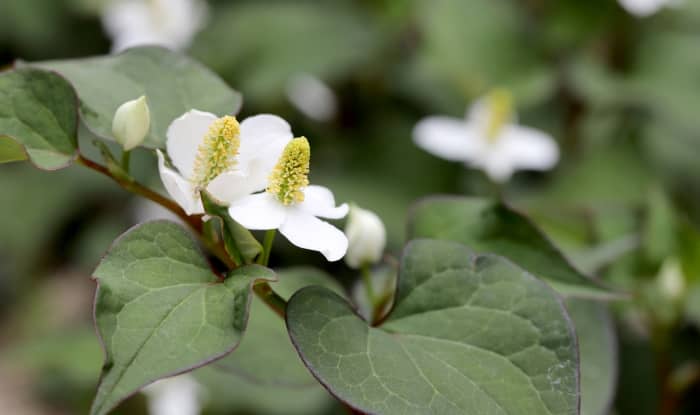
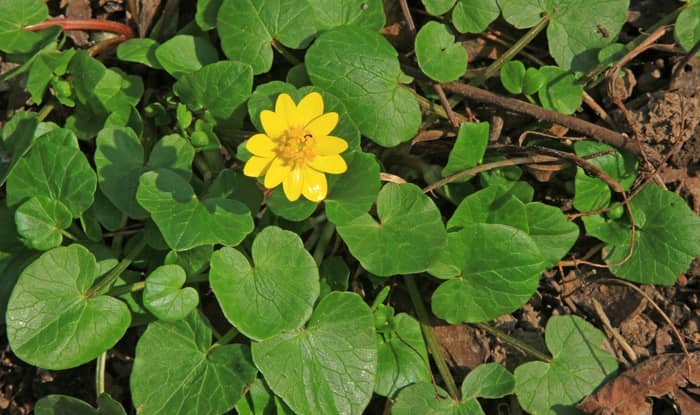
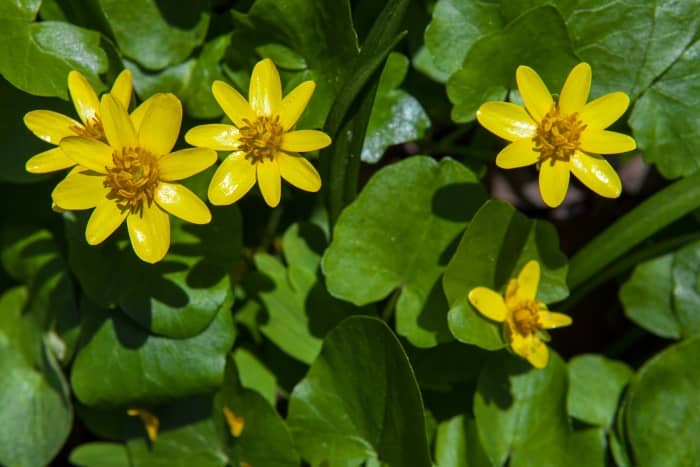
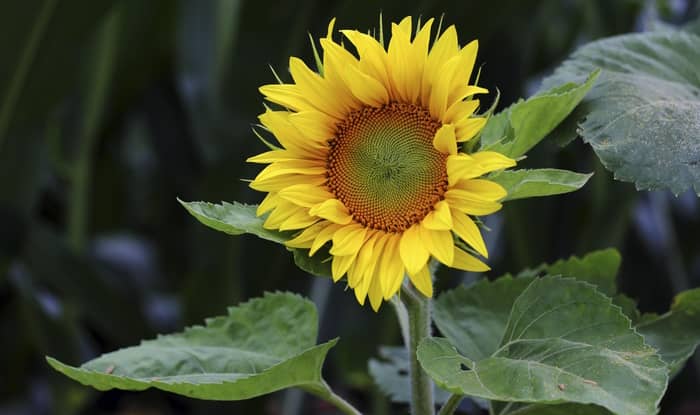

Did not find the weed I was looking for. Blue flower smaller than any shown. Ditto for the leaves.